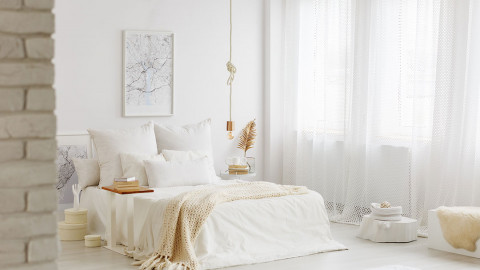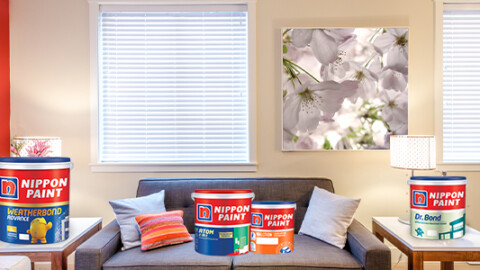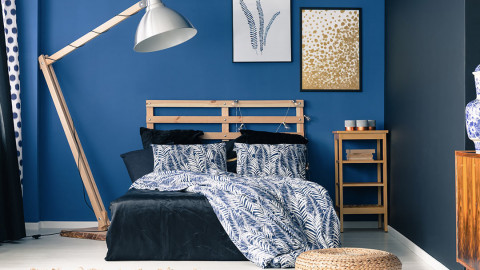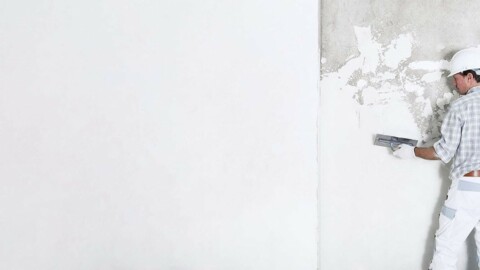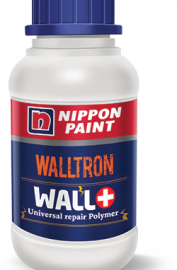Painting has a remarkable ability to rejuvenate and transform living spaces with fresh and renewed energy. Although the choice of paint color is undoubtedly important, the role of coloring agents should not be underestimated. The right tools can make a difference between a professional painting project and one that falls short of your expectations. In this comprehensive guide, we delve into the world of essential paint tools and equipment that are essential to achieving perfect and flawless results in your paint jobs
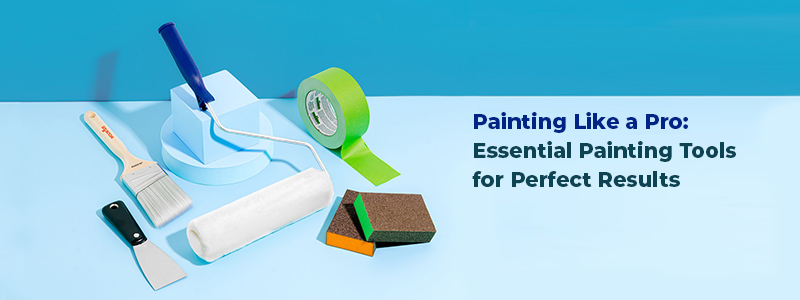
Essential Painting Tools
1. Brushes
Paintbrushes are an essential tool in any painter’s arsenal. They come in various sizes and shapes, each designed for specific applications. From broad brushes for large areas to fine brushes for intricate details, choosing good quality brushes is essential to achieving accurate and consistent strokes on the wall.
2. Paint Rollers
Paint rollers are efficient workhorses that cover large surfaces quickly and evenly. Combined with the appropriate roller coating, they can provide a smooth and flawless finish. The choice of roller button (length of the fabric) depends on the texture of the surface to be painted.
3. Paint Trays
Paint trays provide a convenient and easily accessible platform for loading paint onto a roller. Choose trays with liners or disposable inserts for easy cleaning. Look for sturdy bases with raised edges to spread the paint evenly across the roller.
4. Masking tape
Masking tape, also known as painter’s tape, is an invaluable tool for achieving clean, sharp edges. This prevents color bleeding and ensures that your lines remain sharp and well-defined. This is especially useful when painting edges, corners, or complex patterns.
5. Drip Cloths
Protecting floors, furniture and other surfaces is important during a painting project. Drip cloths or film protect your items from accidental paint splatters and spills, making cleanup much easier.
6. Color Borders
Color Borders are innovative tools designed to create clean edges between walls and ceilings or between different wall colors. They eliminate the need for laborious tapping and ensure professional results.
7. Putty Spade
A putty knife or scraper is a versatile tool suitable for patching holes, filling cracks, and smoothing surfaces before painting. This ensures that your painted surface remains smooth and spotless.
8. Sandpaper
Correct surface pretreatment is the key to a flawless final result. Sandpaper is used to smooth rough spots, remove old paint, and create a suitable surface for paint to adhere to. Different grits of sand are available for different levels.
9. Extension Rods
Extension poles aka Extension rods attach easily to paint rollers, allowing you to reach high walls and ceilings without a ladder. This not only ensures uniform paint but also improves your safety by reducing the need for climbing up high ladders which could be risky
10. Paint Sprayer (optional)
For larger projects or when the goal is an exceptionally smooth finish, spray paint can be a valuable tool. While not necessary for every project, spray paint ensures even coverage and minimizes brushes or rollers.

Now that you know the tools you need, here’s why you should invest in quality painting tools to get the best results.
1. Precision and Consistency
High-quality painting tools are designed with precision in mind. Whether it’s a well-crafted brush or a meticulously engineered roller, these tools ensure even paint distribution and coverage. This level of precision results in consistent color application, eliminating uneven patches or streaks that might affect the final finish.
2. Efficient Paint Application:
Quality brushes and rollers are engineered to hold and release paint optimally. This means you can cover larger areas with fewer strokes, reducing the time and effort required to achieve an even coat of paint. Efficient paint application not only speeds up the process but also conserves paint, making your project more cost-effective.
3. Durability and Longevity:
High-quality painting tools are built to last. They are often constructed using durable materials that can withstand the rigors of repeated use and cleaning. Investing in these tools ensures that they won’t wear down or deteriorate prematurely, saving you money in the long run as you won’t need to replace them as often.
4. Reduced Strain and Fatigue:
Painting can be physically demanding, especially for larger projects. High-quality tools are designed with ergonomic handles and balanced weight distribution, reducing strain and fatigue during prolonged use. This means you can work comfortably for longer periods without sacrificing the quality of your work.
5. Professional-Looking Finish:
Using high-quality tools can elevate the overall appearance of your paint job. A smooth, even finish without brush marks, roller lines, or other imperfections gives your project a professional touch. Whether you’re painting your home’s interior, exterior, or a piece of furniture, the end result will have a polished and refined look.
6. Time and Effort Savings:
Efficiency is a key advantage of using quality painting tools. Their ability to cover larger areas with each stroke, combined with their precision, allows you to complete projects faster. Whether you’re tackling a small touch-up or an extensive renovation, the time and effort saved can be significant.
7. Improved Coverage and Adhesion:
Top-quality brushes and rollers ensure that paint adheres to surfaces evenly and thoroughly. This means you’ll achieve better coverage with fewer coats of paint, resulting in a more vibrant and long-lasting finish. Improved adhesion also reduces the chances of premature peeling or chipping.
8. Consistent Results Across Projects:
One of the hallmarks of high-quality painting tools is their consistency. When you use the same tools for different projects, you can expect similar results in terms of application, coverage, and finish. This predictability can be invaluable, especially if you’re working on a series of interconnected spaces or rooms.
9. Versatility and Adaptability:
Quality painting tools are often designed to be versatile, suitable for various paint types and surfaces. This adaptability ensures that you can tackle a wide range of projects with the same set of tools, reducing the need for multiple specialized tools.
10. Enhanced Overall Experience:
Painting is not just about the end result; it’s also about the process itself. Using high-quality tools enhances your overall painting experience. The smooth glide of a quality brush or roller, the even spread of paint, and the sense of control contribute to a more enjoyable and satisfying painting journey.
11. Professional Finish:
Using quality tools will improve the overall appearance of your paint and give it a professional and polished look.
In summary, equipping yourself with the right paint tools is an important step to perfect and professional paint results. Each tool has its specific role to ensure that the surfaces are well prepared, accurately painted, and expertly finished. Whether you’re starting a small DIY project or a complete home renovation, invest in quality painting tools and accessories to make your house a home.
FREQUENTLY ASKED QUESTIONS:
- What are the 10 painting tools?
The most important painting tools are brushes, paint rollers, paint pads, masking tape, drop cloths, paint rims, putty shovels, sandpaper, extension poles, and optionally a paint sprayer.
2. What tools do we use to paint? What is the best tool?
The tools used for painting are brushes, rollers, platforms, masking tape, drops, edges, putty shovels, sandpaper, extension sticks, and paint sprayers. The best tool depends on the specific project and your personal preferences. Brushes are perfect for detail work, while rollers are perfect for covering large areas quickly.
3. What is the best tool for painting wood?
Painting wooden surfaces requires a combination of tools. A quality brush is essential for intricate detailing and finishing, while a roller is effective for larger, flat wooden surfaces. Sandpaper and putty shovels help prepare the wooden surface and achieve a smooth surface.
4. What is the primary material used in the painting?
The main color material is of course the paint itself. Paints are available in several formulations, including water-based (latex) and oil-based (alkyd paints). The choice of color depends on factors such as the surface to be painted, the desired finish, and personal preferences.

